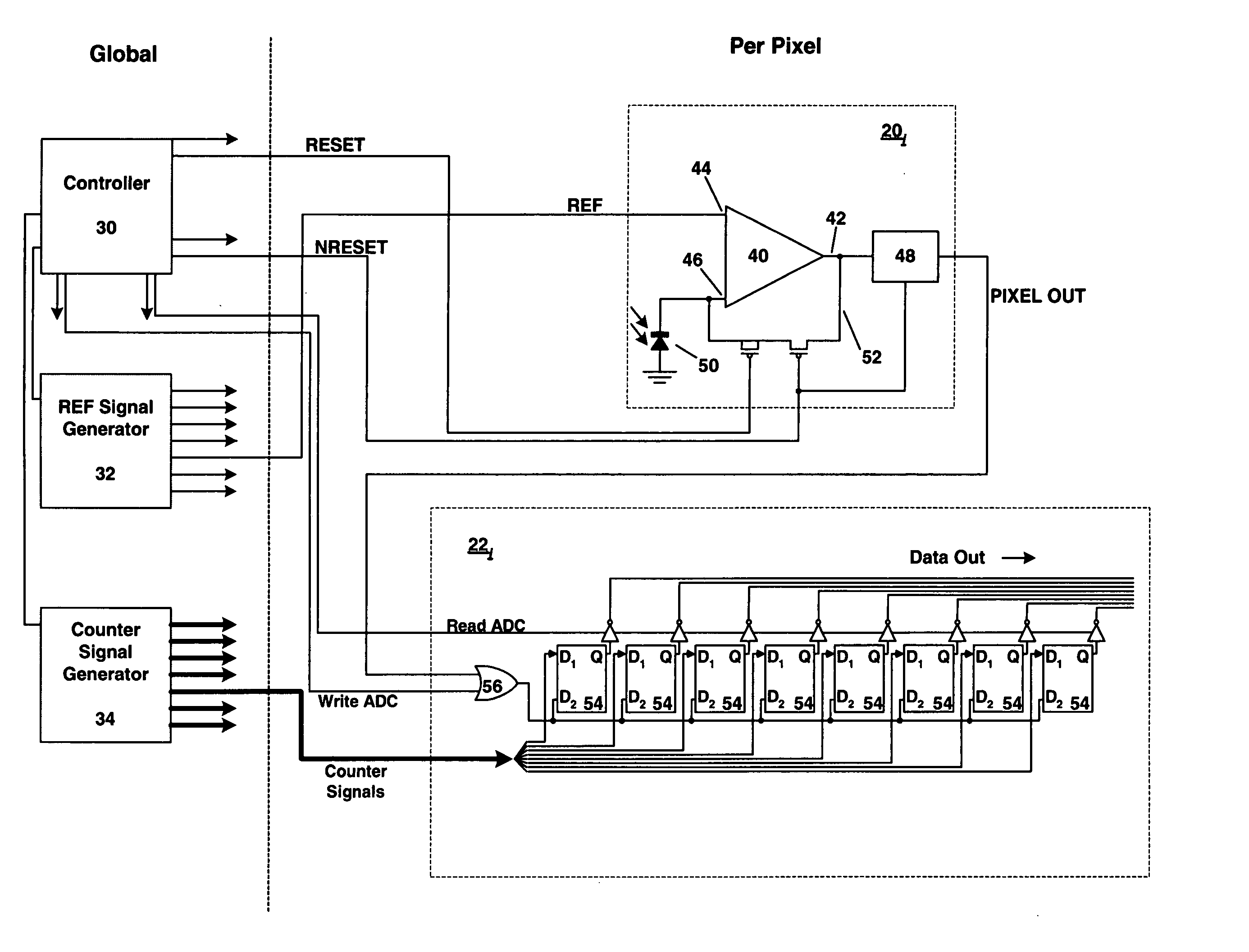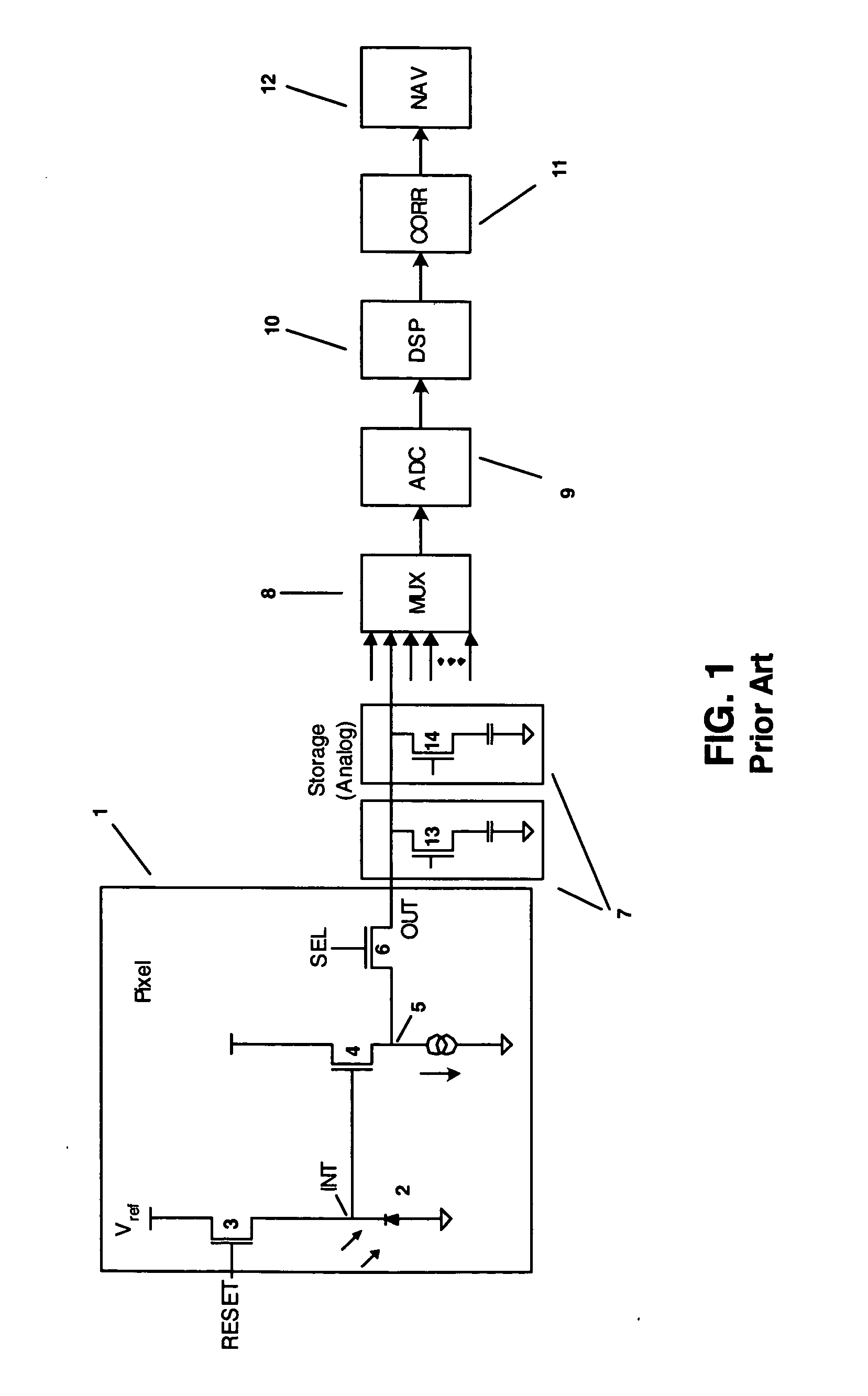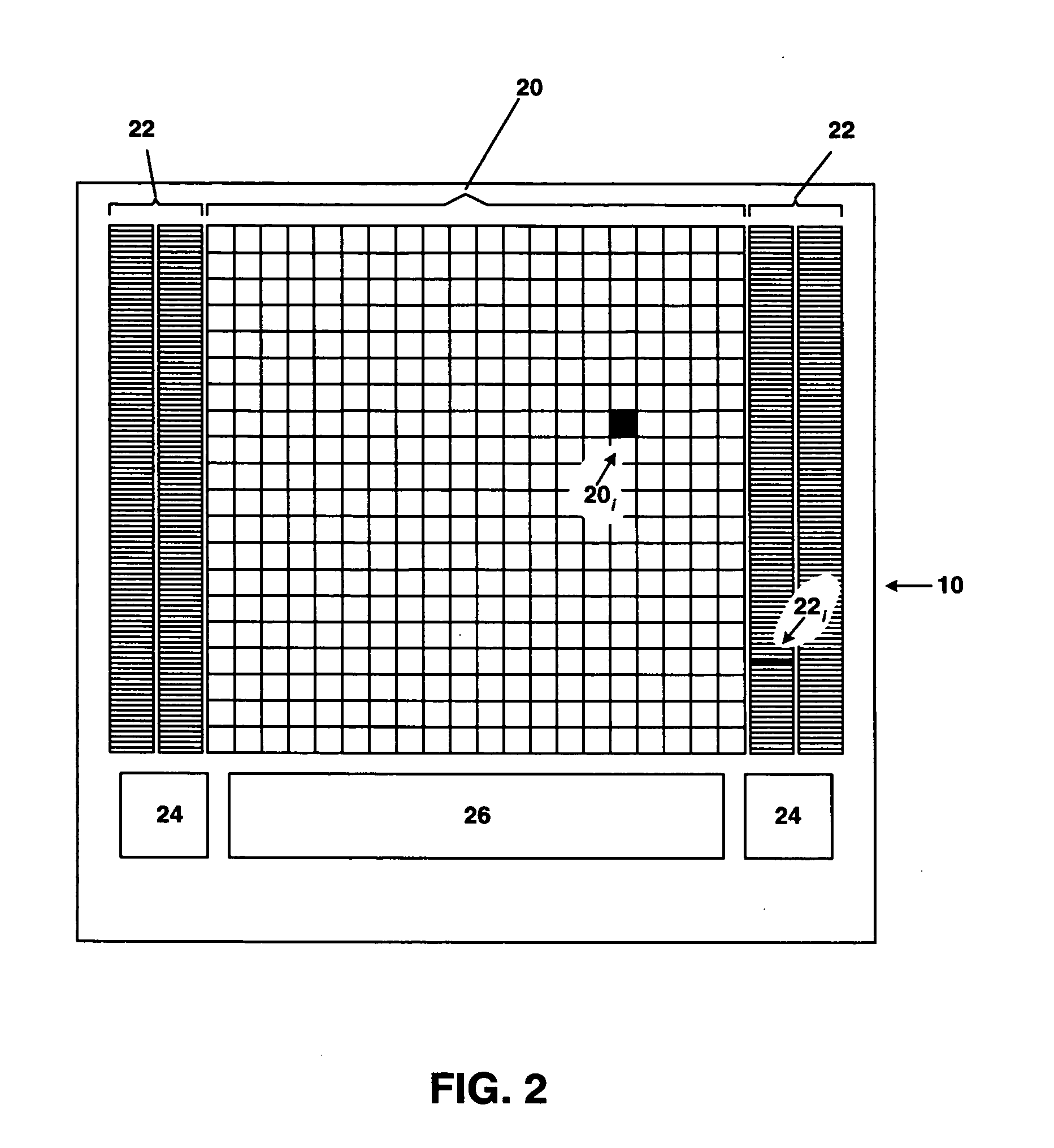Photo-sensor array for motion detection
a technology of motion detection and photosensor array, which is applied in the field of imaging systems, can solve the problems of requiring twice the number of capacitors, consuming less power, and storing an image, so as to reduce the required circuit area, reduce errors, and consume less power
- Summary
- Abstract
- Description
- Claims
- Application Information
AI Technical Summary
Benefits of technology
Problems solved by technology
Method used
Image
Examples
Embodiment Construction
[0021]FIG. 2 is a block diagram of an Integrated Circuit (IC) 10 forming (or forming part of) an image sensor according to one embodiment of the invention. IC 10 includes an array of pixels 20. Located on either side of pixel array 20 are storage elements 22. In one preferred embodiment, a separate storage element corresponds to each pixel. In other words, there is a one-to-one correspondence between pixels and storage elements. Additional circuitry may also be located on IC 10. In the example of FIG. 2, counters, address decoders and other circuitry may be located in regions 24. Similarly, biasing circuitry and Digital to Analog Conversion (DAC) circuitry may be located in region 26. Other circuitry may also be located on IC 10, and the depicted circuitry could be rearranged and / or located on other ICs or circuit boards.
[0022] In operation, array 20 may be positioned to receive light reflected from a surface or object and thereby generate an image of the surface or object. IC 10 i...
PUM
 Login to View More
Login to View More Abstract
Description
Claims
Application Information
 Login to View More
Login to View More - R&D
- Intellectual Property
- Life Sciences
- Materials
- Tech Scout
- Unparalleled Data Quality
- Higher Quality Content
- 60% Fewer Hallucinations
Browse by: Latest US Patents, China's latest patents, Technical Efficacy Thesaurus, Application Domain, Technology Topic, Popular Technical Reports.
© 2025 PatSnap. All rights reserved.Legal|Privacy policy|Modern Slavery Act Transparency Statement|Sitemap|About US| Contact US: help@patsnap.com



